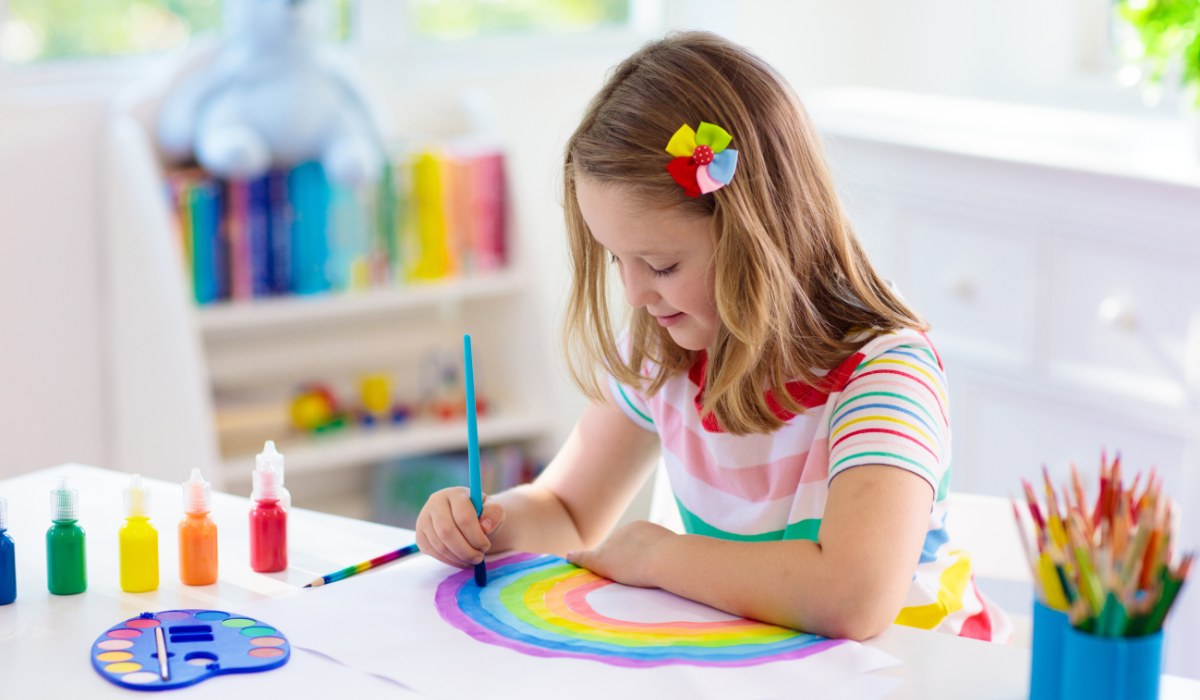Autism Routines

Understanding the Significance of Routines in Autism Spectrum Disorder
Routines and predictability are fundamental aspects of life for many individuals with autism. They serve as a cornerstone for emotional regulation, stress reduction, and developmental growth. This article explores the importance of routines, strategies for effective implementation, and their profound impacts across different age groups, emphasizing person-centered approaches that respect individual preferences and sensitivities.
Why Routines and Predictability Are Essential for Autistic Individuals
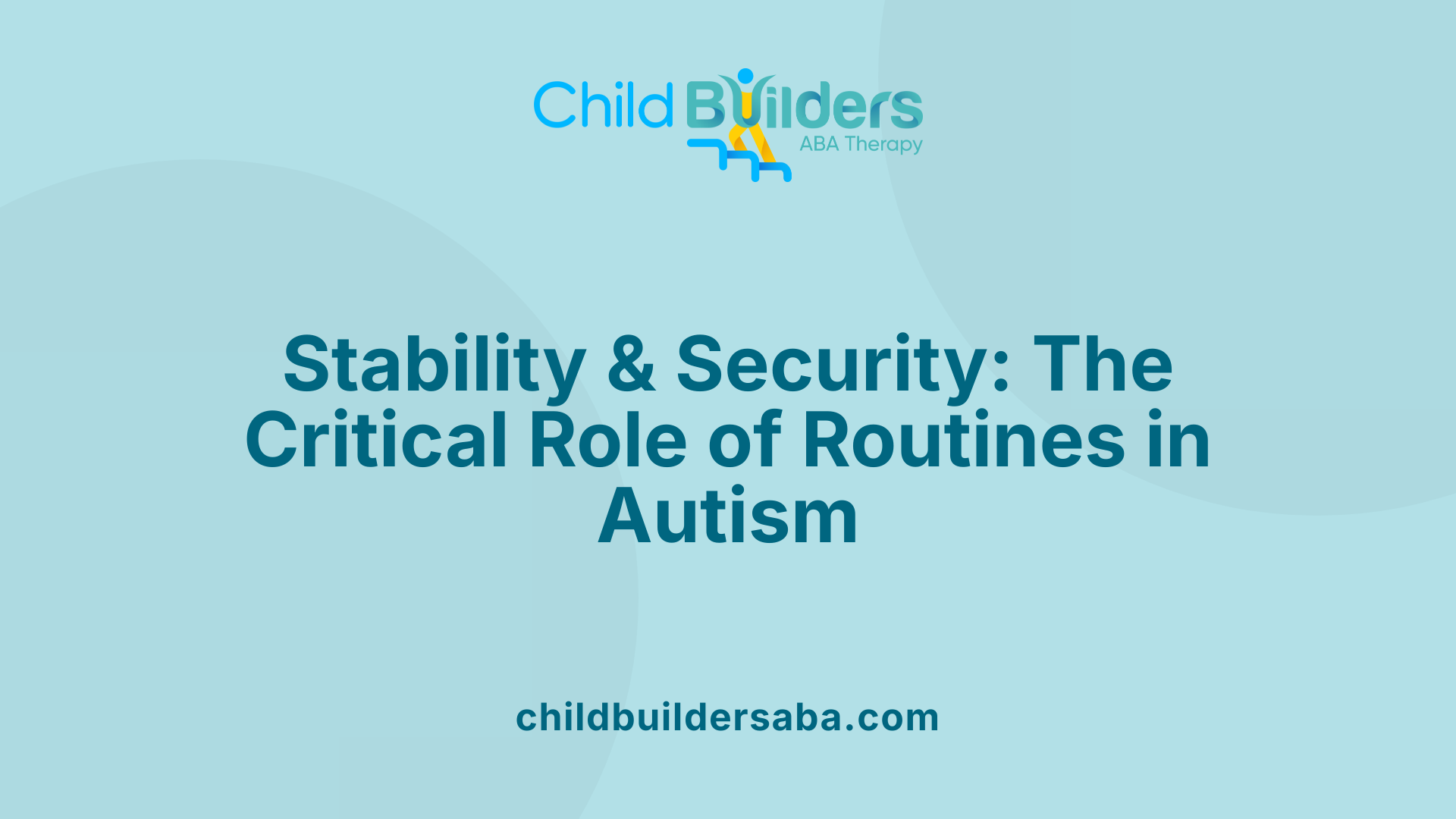
Why are routines and predictability important for individuals with autism?
Routines and predictability serve as vital tools for autistic individuals to create a stable and secure environment. These structured patterns help reduce feelings of uncertainty, which can cause significant stress and anxiety. When daily activities follow familiar sequences, such as specific morning or bedtime routines, it provides a sense of control and comfort.
Having predictable routines also aids in managing sensory sensitivities and transitions, which might otherwise be overwhelming due to heightened reactions to sights, sounds, and textures. Visual supports, social stories, and clear rules make it easier for autistic individuals to understand what to expect, thereby encouraging cooperation and independence.
Furthermore, consistent routines help enhance social skills by offering predictable opportunities for interaction, fostering engagement, and encouraging positive behaviors. They support emotional regulation, reduce meltdowns, and ultimately contribute to overall well-being.
It is crucial, however, that routines remain adaptable. Flexibility, advanced warning of changes, and involvement in planning help prevent distress and promote gradual adaptation. Supporting routines with visual aids and positive reinforcement makes daily life smoother and more manageable, allowing autistic individuals to thrive in their environments.
Benefits of Routines for Children and Adults with Autism
How can routines benefit children and adults with autism?
Routines serve as a foundation of predictability and structure that significantly benefit individuals on the autism spectrum. By establishing consistent patterns in daily activities, routines help reduce feelings of chaos and uncertainty, which are common sources of stress and anxiety. These predictable sequences make it easier for autism individuals to understand what to expect, providing a sense of security and control.
For children and adults, routines support emotional regulation by minimizing overwhelming stimuli and helping manage reactions to change. Visual supports such as schedules, timers, and clear instructions further ease transitions, preventing typical problem behaviors like tantrums or meltdowns.
Routines also foster social skill development, offering structured opportunities for interaction and communication. They create a safe environment for practicing social cues, turn-taking, and cooperation, promoting confidence in social settings.
In addition, adherence to routines builds independence and boosts self-esteem. When individuals feel capable of completing tasks on their own within a predictable framework, they gain confidence and motivation.
Learning and sleep are areas greatly improved by routines. Consistent schedules for waking, meals, and bedtime help develop regular sleeping patterns and reinforce healthy habits. Overall, routines contribute to a higher quality of life by creating a supportive environment that encourages emotional well-being, learning, and social connection for both children and adults with autism.
Common Daily Routines and Personalization Strategies
What are some examples of daily routines for individuals with autism?
Daily routines for people on the autism spectrum are often carefully structured to provide stability and predictability. Typical routines might include morning activities such as waking up, transitioning from sleep to wakefulness, personal hygiene routines like brushing teeth and washing face, and getting dressed. Mealtimes are usually scheduled at consistent times, with visual supports like pictures or symbols to help individuals know when and what to eat.
Throughout the day, individuals might participate in therapy sessions, play activities, and social interactions tailored to their interests and developmental levels. For example, engaging in favorite activities or special interests can help foster motivation and build skills.
Evening routines often involve winding down with calming activities, such as reading or quiet play, followed by bedtime rituals. These might include specific steps like putting on pajamas, brushing teeth again, and engaging in relaxing tasks. Visual schedules, which incorporate photographs or drawings of each activity, are commonly used to aid understanding and foster independence.
Flexibility, reinforcement, and gradual adjustments form the backbone of effective routines. For instance, visual cues can be paired with verbal instructions to reinforce transitions. Incorporating regular breaks and allowing time for preferred activities helps maintain engagement and reduces stress.
Customizing routines according to individual preferences, sensitivities, and strengths is vital. Social routines, self-care skills, and transition practices are integrated to support emotional regulation and skill growth. Overall, these personalized, predictable routines support emotional comfort, learning, and daily functioning for individuals with autism.
Supporting Emotional Regulation and Managing Stress through Routines

How do routines support emotional regulation and reduce stress in autistic individuals?
Routines play a vital role in helping autistic individuals manage their emotions and reduce feelings of stress. By providing a predictable and consistent structure, routines create an environment where individuals know what to expect, which fosters a sense of security and stability. This predictability is especially important because many autistic people are sensitive to changes and can become overwhelmed by unexpected events.
When daily activities follow familiar patterns, it becomes easier for autistic individuals to regulate their emotions. For example, knowing that a certain time of day involves calming activities or specific transitions can help them feel more in control. As a result, routines help minimize anxiety and sensory overload, making emotional responses more manageable.
Moreover, routines support the development of emotional self-regulation skills. Regular follow-up on routines allows individuals to recognize triggers that might cause distress and utilize calming strategies such as deep breathing, sensory tools, or quiet time. Visual supports like schedules and timers provide clear cues, helping individuals understand what’s happening next and reducing uncertainty.
Supporting routines also encourages independent coping. When routines are structured yet flexible enough to accommodate individual preferences, they empower autistic individuals to better handle emotional ups and downs. Overall, routines create an environment of safety and predictability that nurtures emotional well-being and helps prevent behavioral challenges.
The Role of Routines in Therapy and Skill Development
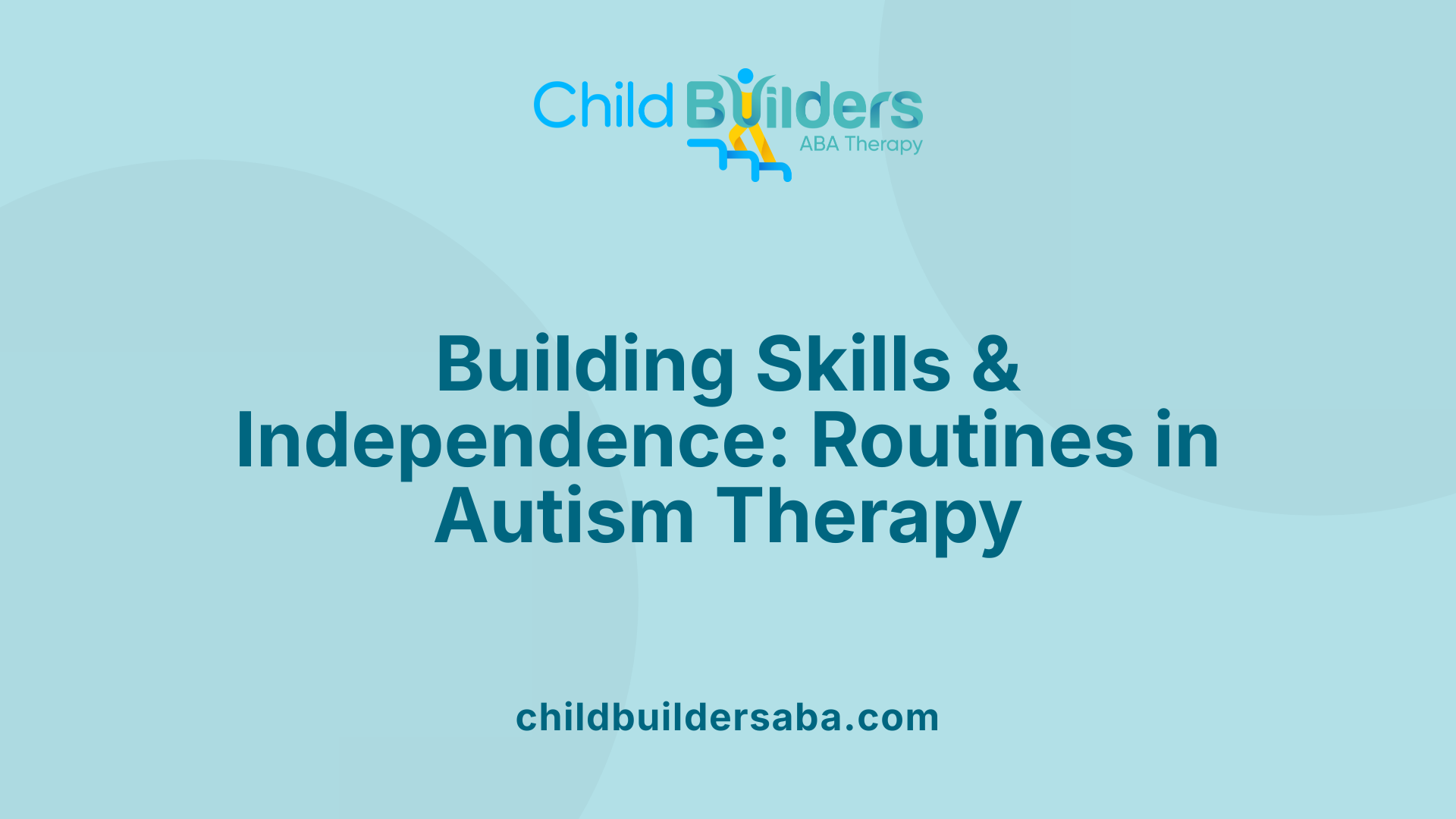
What is the role of routines in therapy settings, such as Applied Behavior Analysis (ABA)?
In therapy for individuals with autism spectrum disorder (ASD), routines serve an essential purpose in fostering learning and promoting positive behavioral changes. Applied Behavior Analysis (ABA), a widely used therapeutic approach, heavily relies on establishing structured environments where routines are fundamental. These routines provide predictability, which helps reduce anxiety and emotional distress, creating a safe space for children to focus on acquiring new skills.
Using visual supports like schedules, timers, and clear instructions makes routines more comprehensible and manageable. This clarity allows children to anticipate upcoming activities, easing transitions and encouraging independence. Routines also act as consistent opportunities for practicing and reinforcing adaptive behaviors, vocabulary, and social skills.
Tailoring routines to each child's unique preferences and needs is vital. Regularly reviewing and adjusting routines ensures they remain effective and relevant for ongoing development. Overall, routines in ABA help create a stable learning environment where children can thrive and steadily build their skills.
Creating Personalized Routines Accommodating Sensory Sensitivities
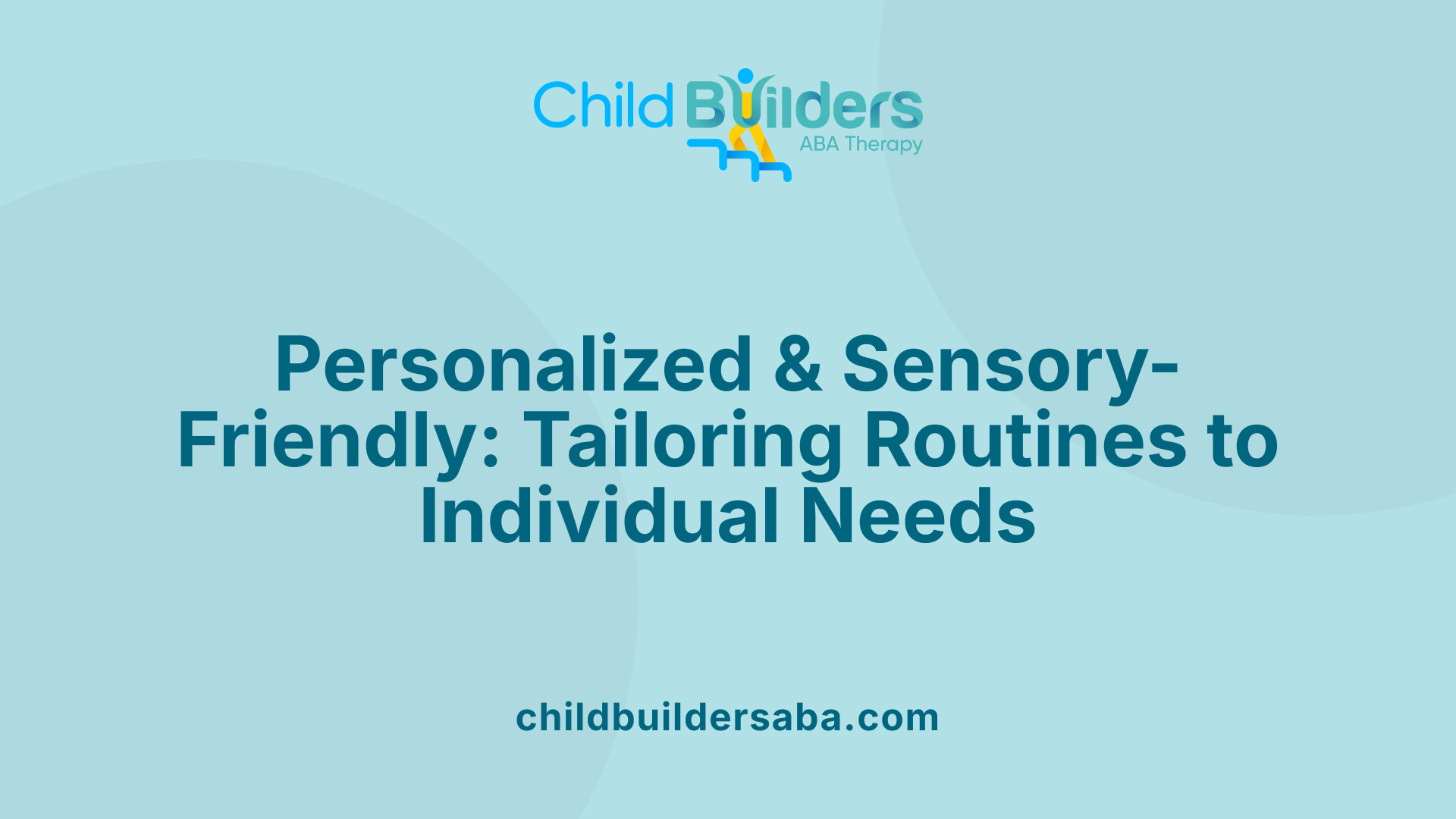
How can caregivers create personalized routines that accommodate individual needs and sensory sensitivities?
Caregivers can develop routines that are tailored to each person by closely observing and learning about their specific preferences and sensitivities. For individuals with autism, sensory sensitivities—such as sensitivities to light, sound, touch, or temperature—are common and should be carefully considered when designing daily activities.
Incorporating visual supports, like visual schedules with pictures, symbols, or real objects, helps clarify routines and reduce uncertainty. These tools make it easier for individuals to understand what to expect, which can lessen anxiety and foster independence.
Adding sensory-friendly activities into routines—such as using calming sensory toys, creating a quiet space, or including preferred sensory inputs—can enhance comfort and help regulate emotional responses. Gradually introducing changes with visual cues or timers ensures smoother transitions, avoiding sudden disruptions that might cause distress.
Flexibility is essential. While routines provide stability, they should also allow room for adjustments. Introducing minor changes gradually and supporting coping strategies like deep breathing or sensory breaks can improve adaptability.
Collaboration with professionals like occupational therapists, psychologists, or special educators can provide additional insights and strategies tailored specifically to individual sensory profiles. Overall, attentive planning and personalized support help create routines that are both effective and comforting for each individual, promoting emotional well-being and quality of life.
Why the Insistence on Sameness Is Intrinsic to Autism
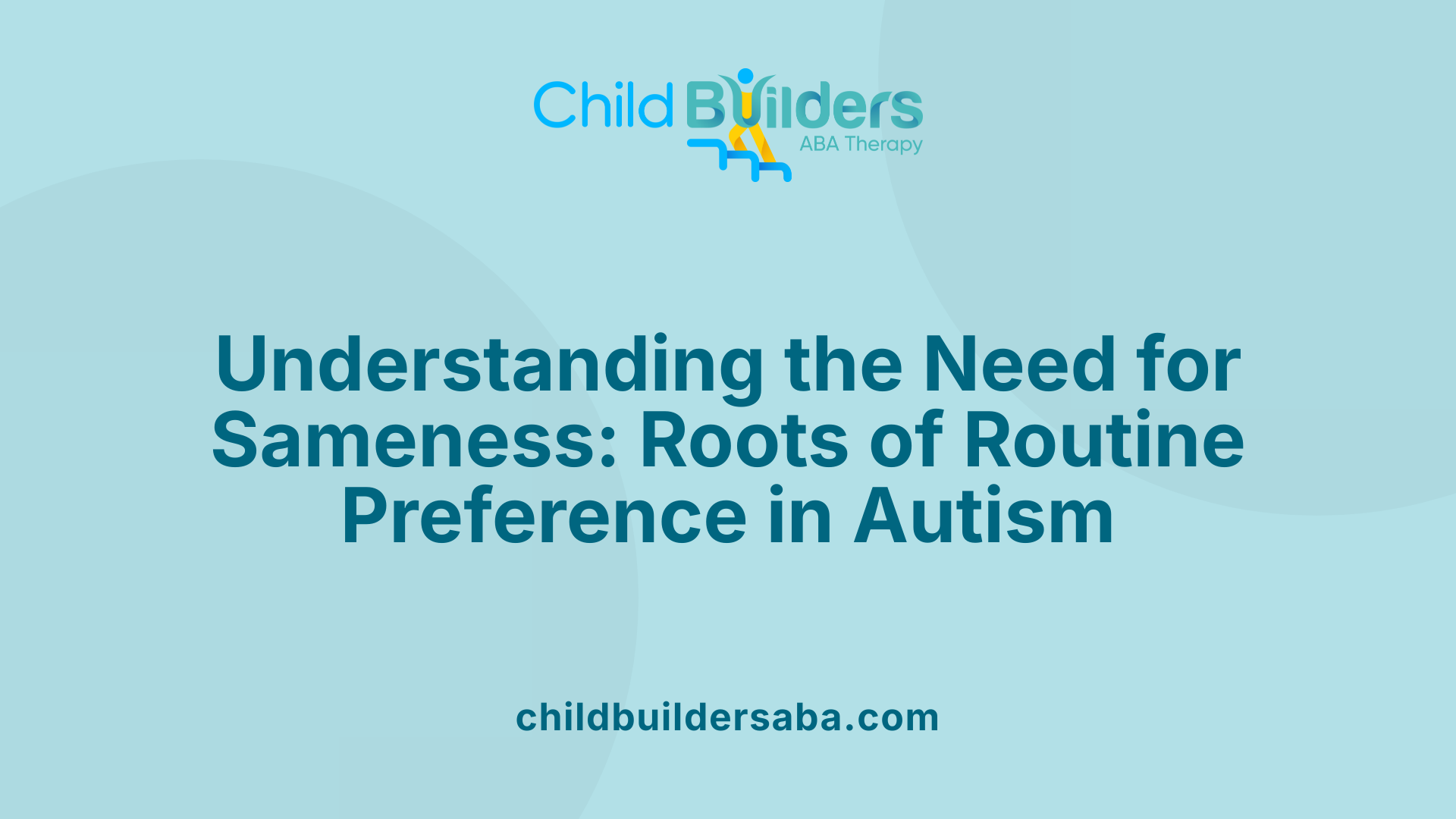
Why do individuals with autism often prefer sameness and predictability?
Individuals with autism commonly favor routines, rituals, and consistent environments because they experience significant challenges with unpredictability. A core feature of autism is difficulty in making predictions about the world, which can lead to feelings of chaos and stress. Sensory sensitivities, such as reactions to loud noises or bright lights, further heighten the need for predictability to avoid overwhelming stimuli.
Research supports this understanding by showing that autistic traits are associated with a stronger preference for predictable tasks and environments. Behaviors like following strict routines or insisting that others adhere to specific patterns serve to create a sense of control. These routines act as anchors, helping reduce anxiety and providing a stable framework in an otherwise unpredictable world.
Autistic behaviors that promote predictability, such as rituals or insistence on sameness, are adaptive strategies. They help manage sensory overload and emotional distress, offering reassurance and stability. By establishing predictable patterns, individuals with autism can better navigate daily life, reducing stress linked to unexpected changes.
The inclination towards sameness is thus deeply rooted in a neurobiological basis that emphasizes the importance of control and stability. These behaviors are not merely preferences but vital coping mechanisms for handling sensory sensitivities and cognitive challenges associated with autism.
Additional insights
Understanding the neurobiological underpinnings behind insistence on routines can improve support strategies. Recognizing this need helps caregivers, educators, and clinicians foster environments that respect individual preferences while gently encouraging flexibility and adaptation.
Enhancing Well-Being through Structured Predictability
Establishing and maintaining routines tailored to individual needs can significantly improve quality of life, emotional resilience, and independence for autistic individuals of all ages. Using visual supports, gradual flexibility, and professional guidance ensures routines are both effective and adaptable, fostering a sense of safety and control. Recognizing the intrinsic value of sameness and predictability underpins respectful, person-centered approaches that support growth and well-being in the autism community.
References
- Preference for order, predictability or routine - National Autistic Society
- Why is Routine so Important to People with Autism & ASD?
- Special interests, routines and rituals: autistic children and teenagers
- The role of routine in supporting people on the autism spectrum
- How to Develop a Daily Routine For Autistic Adults | Prosper Health
- Enhancing Interactions during Daily Routines: A Randomized ...
- Here's Why an Autism Routine is Important



.jpg)


